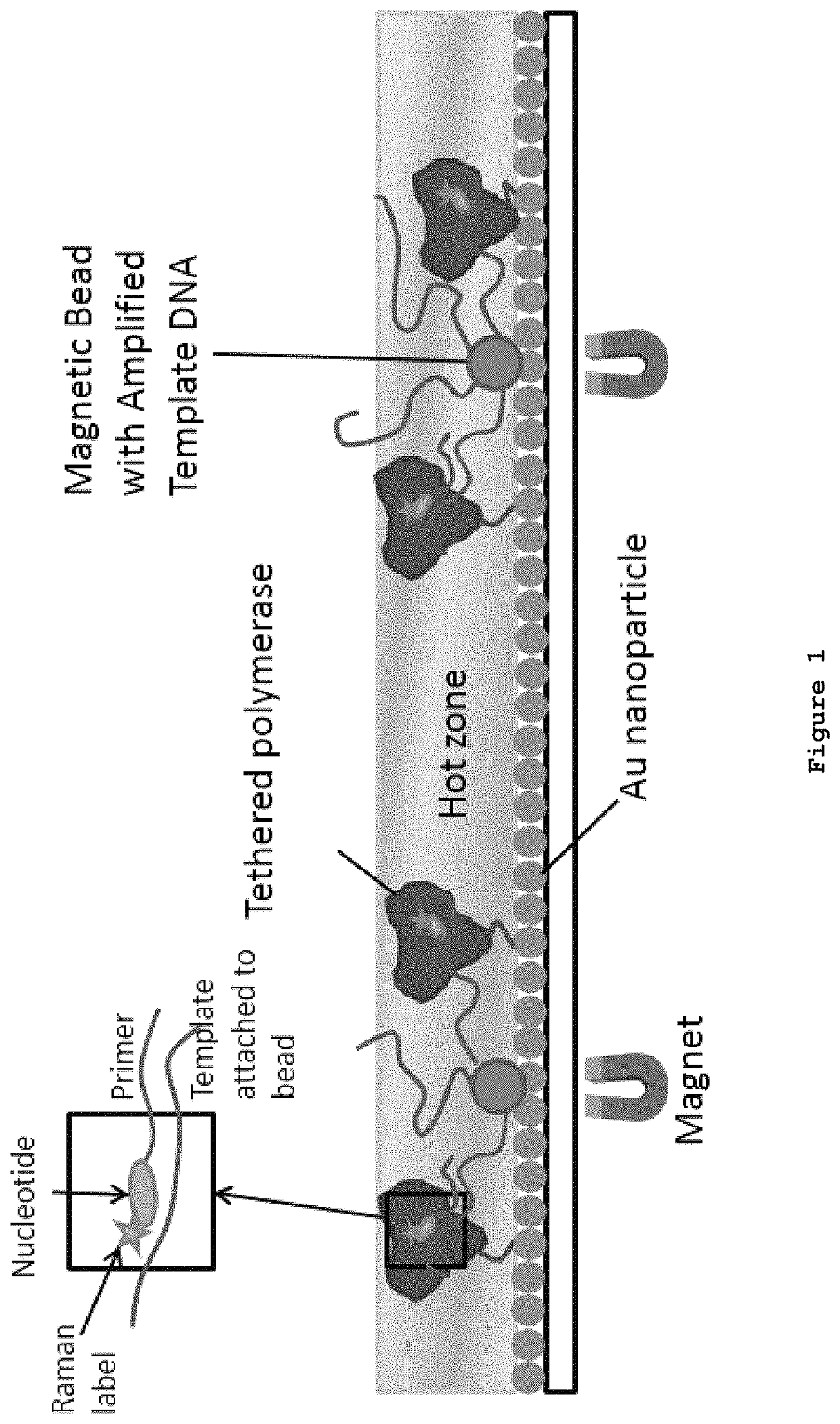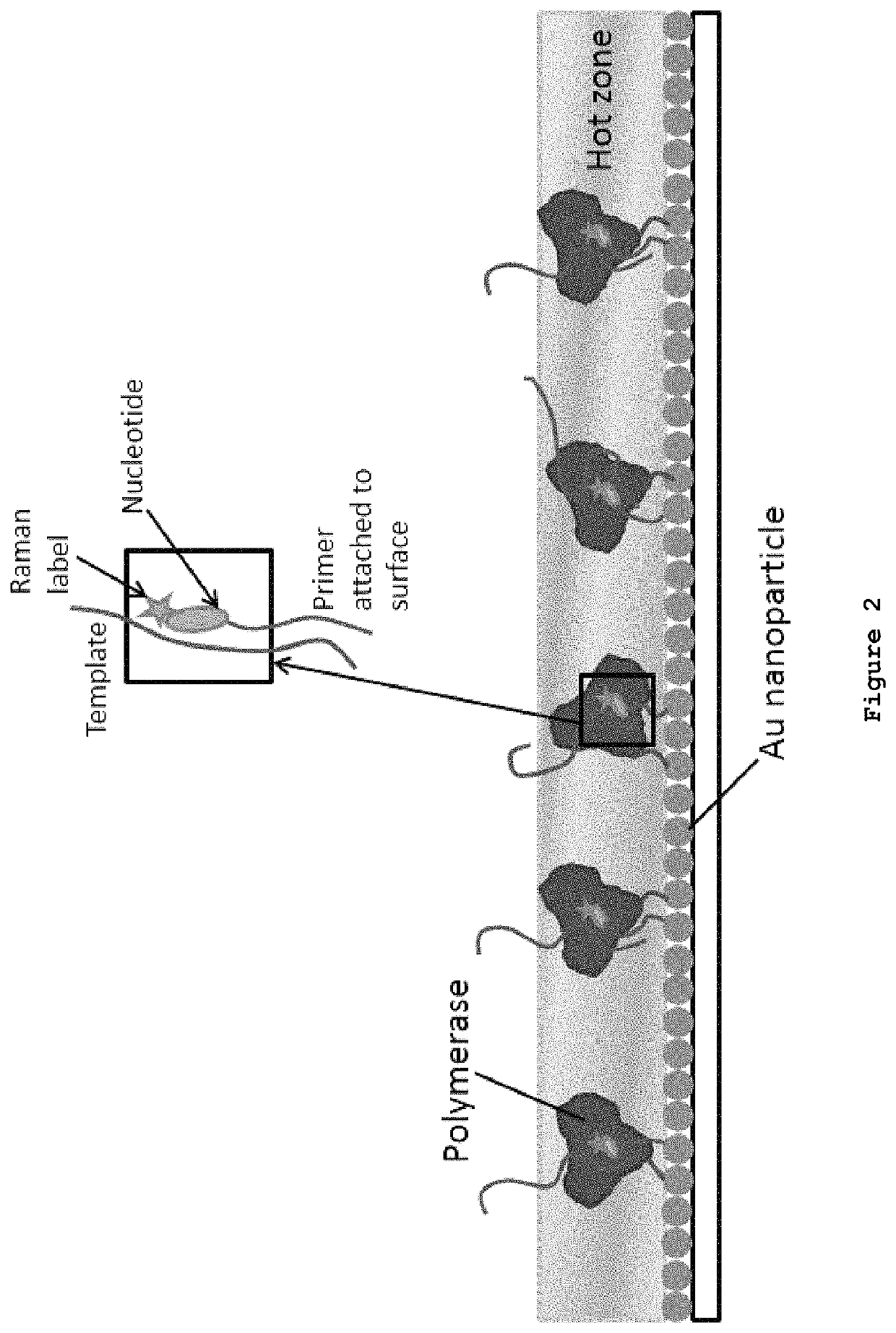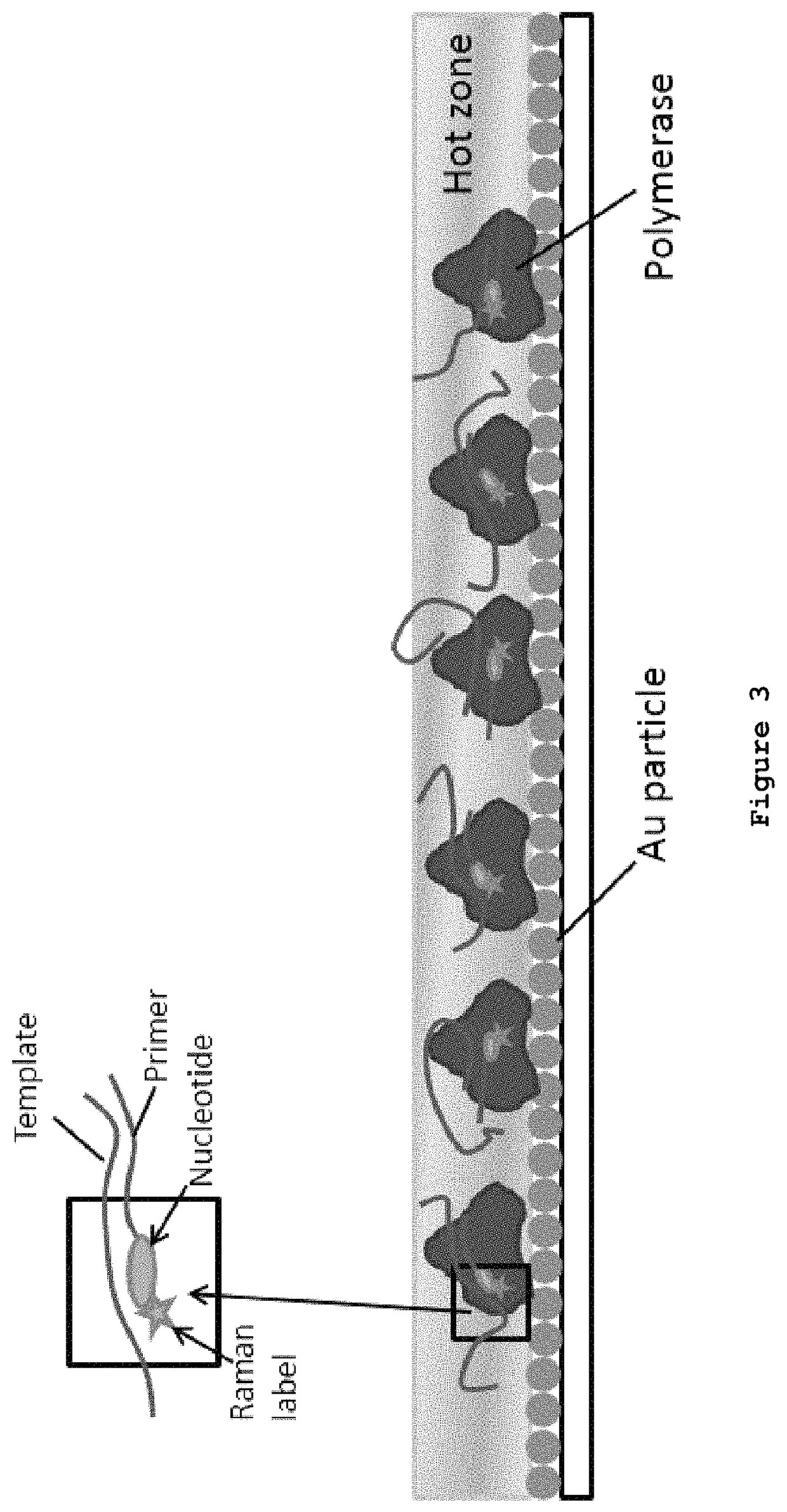DNA sequencing by synthesis with nucleotide analogues and Raman detection
a technology of nucleotide analogues and synthesis, applied in the field of dna sequencing by synthesis with nucleotide analogues and raman detection, can solve the problems of inability to directly sequence, inability to accurately sequence through homopolymer, and inability to achieve sensitivity enhancemen
- Summary
- Abstract
- Description
- Claims
- Application Information
AI Technical Summary
Benefits of technology
Problems solved by technology
Method used
Image
Examples
experiment 1
in which the Raman Active Group Also Serves as the 3′-Blocking Group
[0333]Here, a single moiety of one of the Raman active groups is attached to the 3′-OH of the sugar of the nucleotide as shown in FIG. 10, which depicts four examples. In the first step, beads bearing emulsion PCR-amplified (clonal) DNA molecules bearing adapters and adapter-based primers are deposited on the SERS surface, and the first of four 3′-azidomethyl dNTPs (NRTs), e.g., 3′-blocked dATP. Any small-sized Sepharose bead may be used for the emulsion PCR; paramagnetic beads might be particularly useful when a magnet is placed below the slide, to collect the maximum number of template-bearing beads near the polymerase molecules, which are present in excess and tethered to the gold substrate, as well as to keep them in place during washing and replacement of reagents. The azidomethyl group not only blocks the 3′-hydroxyl group, preventing additional incorporations beyond the initial nucleotide, but also serves as ...
experiment 2
Single Molecule SBS Sequencing in which the Raman Active Group on the 3′-OH Also Serves as the 3′-Blocking Group and a Cluster of the Same Raman Groups is Present on the Terminal Phosphate Group
[0335]The Raman active blocking groups on the 3′-OH have already been described in Experiment 1. In addition, clusters from 2-100 Raman active moieties, identical to each other and the 3′ group moiety are present (similar to that shown in FIG. 11A). Examples of nucleotides with attached clusters of RAGs are shown in FIG. 12. It has been shown that nucleotides modified with very large polymers including PEG molecules with up to 36 ethylene glycol units (Kumar et al 2012) and nucleic acid chains of up to 30 nucleotides are still correctly recognized as substrates by a variety of polymerases (Fuller et al 2015). RAG clusters have important benefits for SERS detection. The more RAGs present, the more opportunity for some of them to be positioned within a Raman hot zone. Moreover, if measurements ...
experiment 3
Single Molecule Sequencing in which the Raman Active Group on the 3′-OH Also Serves as the 3′-Blocking Group and a Cluster of the Same Raman Groups is Attached Via a Cleavable Linker to the Base
[0337]This variant, which is similar to Experiment 2 in that many RAGs are present on the nucleotide, does not require switching between non-catalytic and catalytic metal ions. If the cluster on the base is attached via a cleavable linker identical to the one used as a blocking group, cleavage of both can occur at the same time (FIG. 11B). If for example an azidomethyl group or a disulfide group is used to attach the blocking group and the linker on the base, TCEP can be used to remove both (Guo et al 2008). With an allyl group attachment, Pd(0) or tetrabutylammonium peroxydisulphate / iodine may be used (Ju et al 2006, Yang et al 2002). The 2-nitrobenzyl group undergoes photocleavage at 350 nm. Examples of 3′-reversibly blocked nucleotides with clusters on the base via a cleavable linker are s...
PUM
| Property | Measurement | Unit |
|---|---|---|
| Distances | aaaaa | aaaaa |
| distance | aaaaa | aaaaa |
| wavenumber | aaaaa | aaaaa |
Abstract
Description
Claims
Application Information
 Login to View More
Login to View More - R&D
- Intellectual Property
- Life Sciences
- Materials
- Tech Scout
- Unparalleled Data Quality
- Higher Quality Content
- 60% Fewer Hallucinations
Browse by: Latest US Patents, China's latest patents, Technical Efficacy Thesaurus, Application Domain, Technology Topic, Popular Technical Reports.
© 2025 PatSnap. All rights reserved.Legal|Privacy policy|Modern Slavery Act Transparency Statement|Sitemap|About US| Contact US: help@patsnap.com



